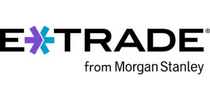The stock market is one of the best ways for the average person to grow their wealth over the long term. It’s nothing to be afraid of, despite how complicated it seems. If you educate yourself, it’s possible for anyone to successfully use the markets to reach their financial goals.
Here’s how to start.
What’s Ahead:
What Is the Stock Market?
The stock market is the collection of company shares that can be bought and sold by investors who trade on exchanges or over the counter.
It’s also global, with countries like the U.S., Canada, the U.K., Germany, Italy, France, Switzerland, Norway, Australia, Japan, and China all having well-developed stock markets.
As of Q1 2022, the total value of the global stock market stood at ~$108 trillion.
Why Does the Stock Market Exist?
The earliest version of the modern stock market started in Amsterdam in the 1600s.
Fundamentally, the stock market exists to connect investors with companies who need money to expand or operate their businesses.
More than just a way to make money, it’s actually a beautiful creation that facilitates the growth and progression of society, and the development of new products, services, and technological innovations.
How Does the Stock Market Work?

Source: Giphy.com
The stock market is built on an interconnected network of stock exchanges (e.g., the New York Stock Exchange, NASDAQ), financial intermediaries, technological infrastructure, and investors.
Every day, trillions of dollars worth of company stock and other financial securities change hands, as investors allocate capital.
Why You Should Invest in the Stock Market
If you are reading this article, you’ve probably already heard some reasons as to why you should invest.
While everyone’s reasons for getting involved are different, from my own ~10 years of experience investing in the market, there are several reasons you should consider starting:
To Increase Your Wealth
For most people, the no. 1 reason for investing in the stock market is to increase their wealth. No matter if you are an individual or institutional investor, those who invest in the stock market do so with the expectation they will have more wealth at the end than when they started.
Most people intuitively understand that investing in the market is a great way to build general wealth, but many don’t appreciate how it also helps shield your money from inflation. Consider that over the last 100 years, the market has generated a 10% annual return while inflation has ranged between 0.12% and 4.70% over the past decade. (But keep in mind that past results don’t guarantee future returns.)
To Fund Your Retirement
Attached to the goal of growing your wealth is being able to retire or not rely on someone else for your ability to live.
Not many people know that retirement is a relatively new phenomenon that began with the wider adoption of pensions in the early 1900s, when the retirement age was pegged at 65. Nowadays, retirement has become the dream for many as they look to escape the rat race.
Read more: How Much Do You Need To Save For Retirement?
To Save for a House or Other Big Purchases
Investing can also be used to fund big purchases like a home, the education of your kids, or another big future purchase.
Here, your investment time horizon becomes important, as investing to fund a purchase is a more short-term goal versus retirement. This is where your investment strategy and the amount of risk you take comes into play.
According to conventional wisdom, you should have at least a five-year time horizon when investing in stocks.
Read more: How Much Cash Do You Really Need To Buy a Home?
To Have Fun With Your Money
Funding your retirement and increasing your wealth are important reasons to invest, but they can also be, well, boring.
The market is an amazing mechanism for long-term wealth-building, but it can also be a way to have fun with your money via trading — so long as you do it responsibly and don’t risk more than you can afford to lose.
Don’t, however, confuse short-term trading with investing. They are not the same thing and trading often results in losses.
Read more: Are You at Risk of YOLOing Away Your Savings?
How to Determine Your Investing Strategy
Once you’ve determined why you are investing, you’ll need to decide how you want to invest.
Generally, there are three decisions you need to make when it comes to shaping your investment strategy:
1. High Risk or Low Risk?
Understanding your risk tolerance and risk capacity are two of the most important things you can do when investing.

Source: Giphy.com
Risk tolerance is your emotional stamina to take on risk (and incur potential losses) to meet your financial goals. It’s a choice that you make.
Risk capacity is your ability to manage losses financially.
There are no free lunches in the markets and there’s always a risk that you can lose money over a given period. That’s why building your investing strategy around your risk tolerance and capacity is the best way to minimize the inherent risks of investing. Conventional wisdom says that the younger you are, the more risk you should take but that doesn’t mean you should become a day trader.
A higher-risk investment approach could mean focusing on specific sectors like technology or biotech, being more active versus passive, or choosing individual stocks versus broad and diversified investment funds.
Read more: How To Determine Your Investing Risk Tolerance
2. Active or Passive?
Active investing involves frequent trading and adjusting your portfolio to generate higher returns than the market. This is the job of professional portfolio managers.
If you are an active investor, you’ll be spending a lot of time paying attention to your investments and doing lots of research on what you invest in and how much you allocate to each holding. Active investing is meant to bring about potentially higher returns, more flexibility when markets get tough, and tax advantages. Overall, it’s much riskier, more expensive, and takes up a lot of time and mind space.

Source: Giphy.com
Alternatively, passive investing centers on buying and holding assets for the long term and not trading actively. It’s more hands-off where you tend to choose individual stocks or funds and hold them through market ups and downs.
Passive investors often look to replicate the average returns of market indexes, like the S&P 500 via index funds. A passive approach generates lower transaction and other investment-related fees and can also be lower risk (depending on what you invest in).
Read more: Should I Buy and Hold? How To Know If It’s the Right Way To Go
3. Individual Stocks or Funds?
If you frequent the financial news, you are probably most familiar with investing in the form of individual stocks or “stock picking.” Here, an investor buys the stock of individual companies based on their belief that those companies will perform well.

Source: Giphy.com
Buying the shares of individual companies like Apple, Microsoft, or AMC has the potential to generate higher returns, but doing this requires lots of research, conviction, and willingness to take on risk. Since most stock pickers underperform broad market indexes like the S&P 500, it also opens you up to below-average returns despite the increased effort.
Lastly, stock picking potentially reduces your ability to sufficiently diversify, another form of risk not found with broad market index funds.
Investment funds on the other hand, are financial products that provide a broad selection of securities. They can be actively managed by a portfolio manager or just track a popular market index like the S&P 500.
The most popular types of investment funds include mutual funds, exchange-traded funds (ETFs), and money market funds.
Broad market index funds are typically the best option for those who are just starting out as you don’t need to be a stock research wiz to get going. A popular example of a low-cost, broad market index fund is Vangaurd’s Total Market Index ETF.
Personally, most of my own portfolio is allocated to low-cost index funds like VTI.
Read more: Mutual Funds vs. ETFs: Which Should You Invest In?
Where Should You Invest?
Now that the hard part is done, it’s now time to choose where you should invest.
Self-Directed Investment Accounts
A self-directed investment account is an individual account that gives you a certain amount of control over how you invest and what you invest in.
Depending on who you open your account with and what type of account it is, you will have the ability to buy and sell different funds, stocks, crypto, or other financial securities like options. There are three common types of self-directed investment accounts, each carrying different restrictions and rules: brokerage, IRA, and 401(k).
1. Brokerage Accounts
Brokerage accounts are great for those who want to be more hands-on with their portfolios, have a higher level of investment knowledge, or enjoy trading. These accounts are taxable and don’t come with the benefits associated with an employer or income-linked account like an IRA or 401K.
If you’re not sure where to start, here are a few online brokers we recommend:
Robinhood

Robinhood is ideal for a beginner, starting with the free stock you get just for signing up. The easy-to-use interface and commission-free trades make it easy to get started as an investor.
One of Robinhood’s standout features is its watchlist. This lets you add some stocks to that list and monitor how they perform before investing in them. It’s a great way to learn the market without putting a dime of your own money in. Robinhood also offers fractional shares, so you can buy into big-name stocks without having to shell out hundreds or thousands of dollars to do it.
Advertiser Disclosure – This advertisement contains information and materials provided by Robinhood Financial LLC and its affiliates (“Robinhood”) and MoneyUnder30, a third party not affiliated with Robinhood. All investments involve risk and the past performance of a security, or financial product does not guarantee future results or returns. Securities offered through Robinhood Financial LLC and Robinhood Securities LLC, which are members of FINRA and SIPC. MoneyUnder30 is not a member of FINRA or SIPC.”Public

Public is another app that can get you started with investing. You’ll get commission-free trades with no minimum balance requirements.
Public is unique for taking a social media approach to investing. You can ask questions or exchange tips with other investors. Best of all, you can follow more experienced investors and keep an eye on how they’re building and tweaking their portfolios. The community setup makes it perfect for learning the ropes. Public also offers fractional shares, letting you buy into big-name stocks for as little as $5.

E*TRADE
E*TRADE has a low minimum investment of $500, and you can trade stocks and options for $0; ETFs, for $6.95. Plus, E*TRADE offers 100 commission-free ETFs and 4,400 no-transaction-fee mutual funds.
Read more: Best Online Brokerage Accounts for Beginners
2. IRA Accounts
An IRA is an individual investment account that allows you to save for retirement with tax benefits. There are two types of IRA accounts: a Roth IRA and a traditional IRA.
A Roth IRA leverages after-tax contributions, and investment gains are withdrawn tax-free in retirement.
A traditional IRA is funded with pre-tax dollars, and taxes must be paid when you withdraw in retirement.
There are multiple ways to invest via an IRA, either through stocks or funds.
Read more: Roth IRA or Traditional IRA: Which Should You Choose?
3. 401(k) Accounts
A 401(k), conversely, is a retirement account where investments can grow tax-deferred. This account is offered by a company to its employees, and contributions are made on a pre-tax basis. 401(k)s generally have restrictions on what you can invest in, and tend to be constrained to a selection of funds.
While IRAs and 401(k)s have tax benefits, they don’t enable you to withdraw your money at any time, for any reason, without a tax penalty.
Read more: What’s the Difference Between a 401(k) and IRA, and Which Should You Invest In?
Robo-Advisors
A robo-advisor is an automated investment service that provides algorithmically enabled investment “advice” and portfolios.
Those who opt for robos usually start by completing a survey related to their goals, risk tolerance, and time horizons, and then are provided with a full portfolio that meets the criteria gleaned from the survey.
Some robo-providers can help with automating tax harvesting strategies or provide proactive direction on managing contributions to meet individual goals. Robos are best for those who want a set-it-and-forget-it approach to investing, where they don’t need to worry about things like portfolio rebalancing or construction.
While robo advisors are great low-touch options, they tend to be more expensive than building your own portfolio based on low-cost individual index funds, and aren’t always offered across all types of investment accounts.
Here are a few robo-advisors we recommend:
![]()
Betterment
Betterment charges an annual management fee of 0.25% of your account balance for their Digital package, which has a $10 minimum deposit required to start investing, and a $0 minimum balance after that.

Empower
Empower charges you nothing to use their financial tools, but if you want Empower to manage your investments, they charge a 0.89% annual fee on investments up to the first $1,000,000.

M1
M1 is completely free, but it’s a hybrid of a robo-advisor and personal management. That means you can choose your own investments, but M1 will take on the task of rebalancing your portfolio, so you don’t have to worry about not having a diversified portfolio.
Read more: Best Robo-Advisors
(Personal Capital is now Empower)
Empower Personal Wealth, LLC (“EPW”) compensates Webpals Systems S. C LTD for new leads. Webpals Systems S. C LTD is not an investment client of Personal Capital Advisors Corporation or Empower Advisory Group, LLC.
How Much and How Often Should You Invest?
There are many rules of thumb that provide guidelines for how much one “should” save and invest; the 50/30/20 rule is one of the most well-known. But the problem with rules of thumb is they don’t account for who you are, what your specific goals are, or what your financial situation is.
For example, if you have high-interest debt, it might make more sense to pay that off before you invest. Eliminating debt generates an immediate rate of return that could exceed your investment performance.
That’s why whenever I get asked this question, I always say that it depends on your goals and what your financial situation is. If you are in the position to invest, aim for at least 20% of your after-tax income and increase as you can.
Just remember that when it comes to being in the markets, time is your greatest asset. The longer you are in the markets, the higher the likelihood you have of building real wealth.
Read more: Should You Pay Off Debt Before Investing?
Pitfalls to Avoid
If you’ve chosen to get started on your investing journey, congratulations! It will likely be one of the best things you’ll do for your future self.
With that in mind, there are several things you should watch out for.
Not Knowing How Much You Are Paying
The investment industry can make it difficult to know how much you are paying for its products and services.
No matter what strategy you deploy, where you invest, and what you invest in, make sure you understand how much you are paying and what you are paying for:
- Before you trade, know how much you are paying for that trade.
- Before you buy a mutual fund or ETF, know what the total cost of the fund is (management expense ratio and trading fees).
- Before you invest with a robo-advisor or in a 401(k), know how much the portfolio management fees are.
- Before you sell an investment, know what tax liabilities you might be responsible for.
Watching Your Portfolio Everyday
One of the worst things you can do for your investment returns and your mental health is to watch your stocks frequently. The more you watch the markets, the more likely you’ll be to trade out of fear of loss, prematurely change your investment strategy, or get frustrated by the process of investing, which is a long-term endeavor.
Most financial advisors recommend you should check on your portfolio no more than every three months.
Read more: Why You Shouldn’t Care About a Stock Market Drop
Listening to Financial Personalities and Finfluencers
There are lots of people on TV and social media who will tell you what you should invest in.
You may think listening to these individuals will give you a better chance of meeting your financial goals, but this is often not the case.
CXO Advisory Group analyzed 6,582 public market calls made by 68 financial pundits from 2005 to 2012 and found their average accuracy was only 47%. This is slightly worse than flipping a coin.
As you start on your investing journey, learn to recognize that the majority of what you see on TV, YouTube, and TikTok is entertainment, not necessarily solid financial information. Sure, there is good financial content out there on social media [Editor’s note: Cough, cough, like Money Under 30’s own Instagram, YouTube, and TikTok!], but start by educating yourself so you can filter out the noise.
Some great places to start are Morgan Housel’s “The Psychology of Money,” Nick Maggiulli’s “Just Keep Buying,” and Josh Brown and Brian Portnoy’s “How I Invest My Money.”
Summary
Investing in the stock market may seem complicated at first (and to be fair, it is a complex system), but it’s not as difficult as you probably think to get started. Once you know your own financial goals, investing preferences, and risk tolerance, you can choose to be as hands-on or as hands-off as you like.
Just remember: when it comes to the stock market, it’s about the long game. Sure, there are stories of people lucking out with big wins by buying low and selling high, but there are also stories about epic losses when investors tried (and failed) to time the markets. Approach stock market investing with a healthy dose of patience and caution, and you’ll be just fine.


